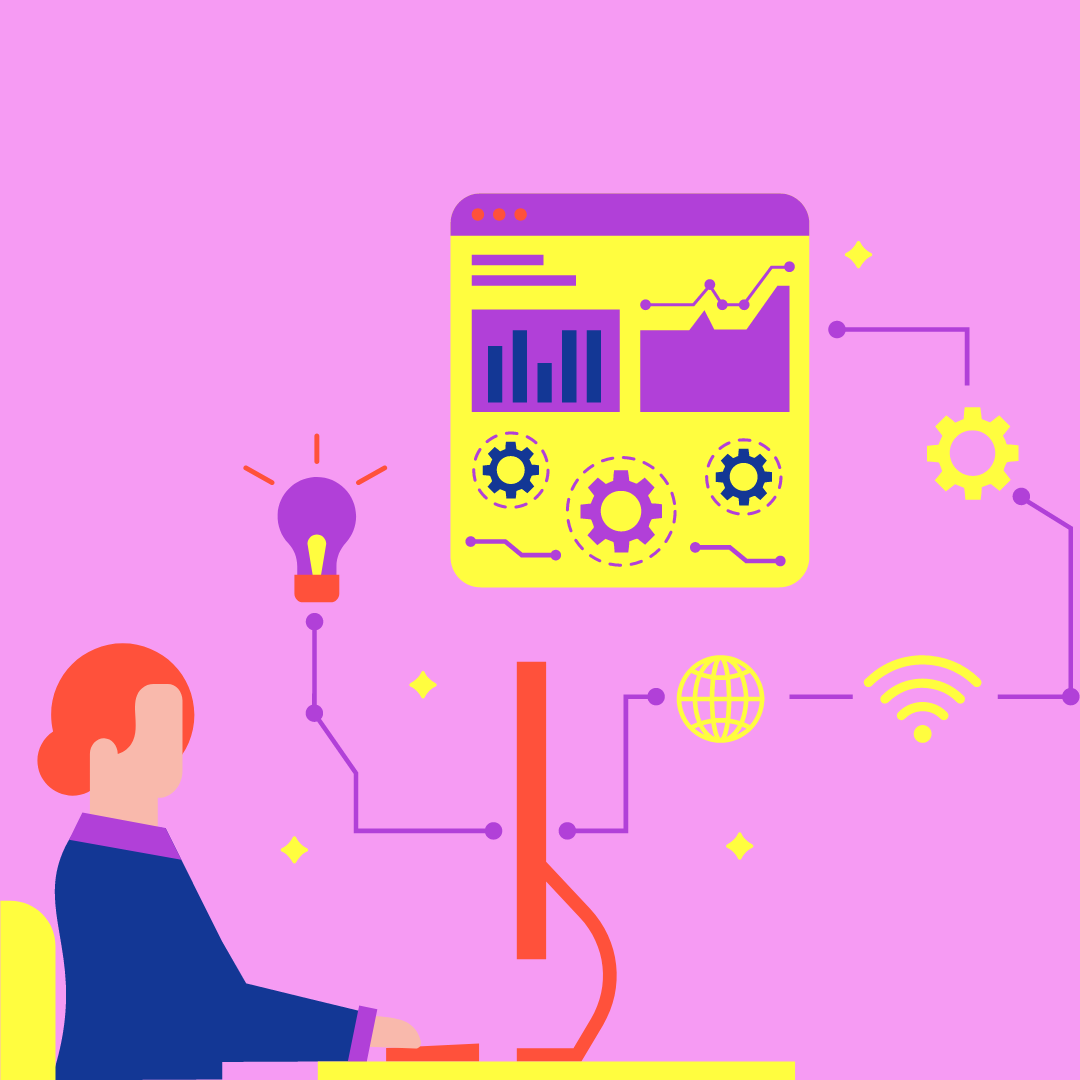
Finding the Sweet Spot: Timing Tech Modernization in a Fast-Paced World
Modernization efforts are a tightrope walk over a chasm of technological obsolescence.
Navigating the rapids of technological change is daunting for any organization, especially when tasked with the modernization of IT systems. As companies embark on this journey, the looming question persists: How long is too long to build and deploy products before the technology itself evolves? The repercussions of a mistimed modernization can be profound, ranging from wasted investments to falling irretrievably behind in a competitive marketplace.
Modernization Operations: A Delicate Balance
Modernization is not a one-size-fits-all operation; it requires a nuanced approach tailored to an organization's unique landscape. The considerations are manifold. Understanding customer needs, gauging operational readiness, ensuring seamless integration, and keeping abreast of security protocols are all critical. It’s a balancing act between the current state of technology and the predicted trajectory of its evolution.
When we adopt modernization techniques, we must do so with a clear view of the horizon. Market trends can offer valuable insights into what’s next, and preparing for these shifts ensures that modernization efforts are not in vain. Simultaneously, gauging the current IT infrastructure’s capacity to adapt and adopt new technologies is a prerequisite to ensure compatibility and scalability.

The Long-Term Benefits of IT Infrastructure Modernization
The modernization of IT infrastructure is a long-term investment that pays dividends. Improved efficiency leads to a direct impact on the bottom line, with streamlined processes and faster service delivery. Scalability allows for growth without the teething troubles of performance lags. This strategic foresight places companies at a vantage point where they can anticipate changes and stay ahead of the curve, gaining a competitive advantage that is both sustainable and dynamic.
The Process of Technological Modernization
Modernizing technology is an iterative process that begins with a comprehensive assessment of the existing systems. The planning stage involves setting clear objectives that align with business goals and preparing a strategy that mitigates risks while aiming for future-readiness. The execution stage is where the rubber meets the road, integrating new systems while minimizing operational disruptions. Post-deployment, a thorough review ensures the new setup meets performance benchmarks and user expectations.
From Outdated to E-Business Ready
Transforming an old computer system into an effective e-business system is like replacing the engine of a moving car. It requires a meticulous approach where evaluation, platform selection, and data migration happen with precision. The integration of new applications into existing business workflows is key to unlocking the potential of e-business.

Understanding the Impacts of Application Modernization
The ripple effects of application modernization can be vast. Enhanced performance not only drives user satisfaction but also has a trickle-down effect on productivity. The agility gained through modern applications allows businesses to pivot with market demands quickly. Moreover, as older applications tend to become resource-intensive over time, modernization can alleviate the need for constant upkeep and associated costs.
The Imperative of Technology Modernization
Modernization is crucial in technology because it fuels innovation and operational excellence. It reflects the evolving expectations of users who demand efficient, seamless digital interactions. Furthermore, as businesses grow, the need for robust, secure, and scalable technology becomes non-negotiable.
The Intersection of Business Processes and Technology
Business processes have been reshaped by technology through automation, which has streamlined operations and unlocked new possibilities for efficiency. Data analytics has emerged as a key driver for informed decision-making, while collaboration tools have transformed the dynamics of workplace interaction and customer engagement.
Technology in the Modern Business Landscape
Modern businesses are increasingly reliant on computer technology. Cloud computing has become the backbone of data storage and resource management. Artificial intelligence and machine learning are at the forefront of automating complex tasks and providing insights. The Internet of Things (IoT) offers unprecedented connectivity, spawning new opportunities for product development and service enhancement.

E-Business Technologies: The Catalysts of Change
Technologies such as e-commerce platforms have democratized the ability to trade online, while mobile computing has ensured that business is not tethered to a desk. Blockchain technology has introduced new standards for security and transparency, particularly in financial transactions.
Conclusion
Modernization is an essential, continuous cycle of renewal and evolution. The ideal timing for deploying new technology in business is contingent upon a strategic assessment of external and internal factors that can either accelerate success or hinder progress. As technology forges ahead with relentless momentum, organizations must remain vigilant and agile, ready to embrace the changes that herald the next wave of innovation. Finding the sweet spot for modernization is more than just keeping pace; it's about ensuring that the technology serves the business, and not the other way around.
Navigating the rapids of technological change is daunting for any organization, especially when tasked with the modernization of IT systems. As companies embark on this journey, the looming question persists: How long is too long to build and deploy products before the technology itself evolves? The repercussions of a mistimed modernization can be profound, ranging from wasted investments to falling irretrievably behind in a competitive marketplace.
Modernization Operations: A Delicate Balance
Modernization is not a one-size-fits-all operation; it requires a nuanced approach tailored to an organization's unique landscape. The considerations are manifold. Understanding customer needs, gauging operational readiness, ensuring seamless integration, and keeping abreast of security protocols are all critical. It’s a balancing act between the current state of technology and the predicted trajectory of its evolution.
When we adopt modernization techniques, we must do so with a clear view of the horizon. Market trends can offer valuable insights into what’s next, and preparing for these shifts ensures that modernization efforts are not in vain. Simultaneously, gauging the current IT infrastructure’s capacity to adapt and adopt new technologies is a prerequisite to ensure compatibility and scalability.

The Long-Term Benefits of IT Infrastructure Modernization
The modernization of IT infrastructure is a long-term investment that pays dividends. Improved efficiency leads to a direct impact on the bottom line, with streamlined processes and faster service delivery. Scalability allows for growth without the teething troubles of performance lags. This strategic foresight places companies at a vantage point where they can anticipate changes and stay ahead of the curve, gaining a competitive advantage that is both sustainable and dynamic.
The Process of Technological Modernization
Modernizing technology is an iterative process that begins with a comprehensive assessment of the existing systems. The planning stage involves setting clear objectives that align with business goals and preparing a strategy that mitigates risks while aiming for future-readiness. The execution stage is where the rubber meets the road, integrating new systems while minimizing operational disruptions. Post-deployment, a thorough review ensures the new setup meets performance benchmarks and user expectations.
From Outdated to E-Business Ready
Transforming an old computer system into an effective e-business system is like replacing the engine of a moving car. It requires a meticulous approach where evaluation, platform selection, and data migration happen with precision. The integration of new applications into existing business workflows is key to unlocking the potential of e-business.

Understanding the Impacts of Application Modernization
The ripple effects of application modernization can be vast. Enhanced performance not only drives user satisfaction but also has a trickle-down effect on productivity. The agility gained through modern applications allows businesses to pivot with market demands quickly. Moreover, as older applications tend to become resource-intensive over time, modernization can alleviate the need for constant upkeep and associated costs.
The Imperative of Technology Modernization
Modernization is crucial in technology because it fuels innovation and operational excellence. It reflects the evolving expectations of users who demand efficient, seamless digital interactions. Furthermore, as businesses grow, the need for robust, secure, and scalable technology becomes non-negotiable.
The Intersection of Business Processes and Technology
Business processes have been reshaped by technology through automation, which has streamlined operations and unlocked new possibilities for efficiency. Data analytics has emerged as a key driver for informed decision-making, while collaboration tools have transformed the dynamics of workplace interaction and customer engagement.
Technology in the Modern Business Landscape
Modern businesses are increasingly reliant on computer technology. Cloud computing has become the backbone of data storage and resource management. Artificial intelligence and machine learning are at the forefront of automating complex tasks and providing insights. The Internet of Things (IoT) offers unprecedented connectivity, spawning new opportunities for product development and service enhancement.

E-Business Technologies: The Catalysts of Change
Technologies such as e-commerce platforms have democratized the ability to trade online, while mobile computing has ensured that business is not tethered to a desk. Blockchain technology has introduced new standards for security and transparency, particularly in financial transactions.
Conclusion
Modernization is an essential, continuous cycle of renewal and evolution. The ideal timing for deploying new technology in business is contingent upon a strategic assessment of external and internal factors that can either accelerate success or hinder progress. As technology forges ahead with relentless momentum, organizations must remain vigilant and agile, ready to embrace the changes that herald the next wave of innovation. Finding the sweet spot for modernization is more than just keeping pace; it's about ensuring that the technology serves the business, and not the other way around.
'

